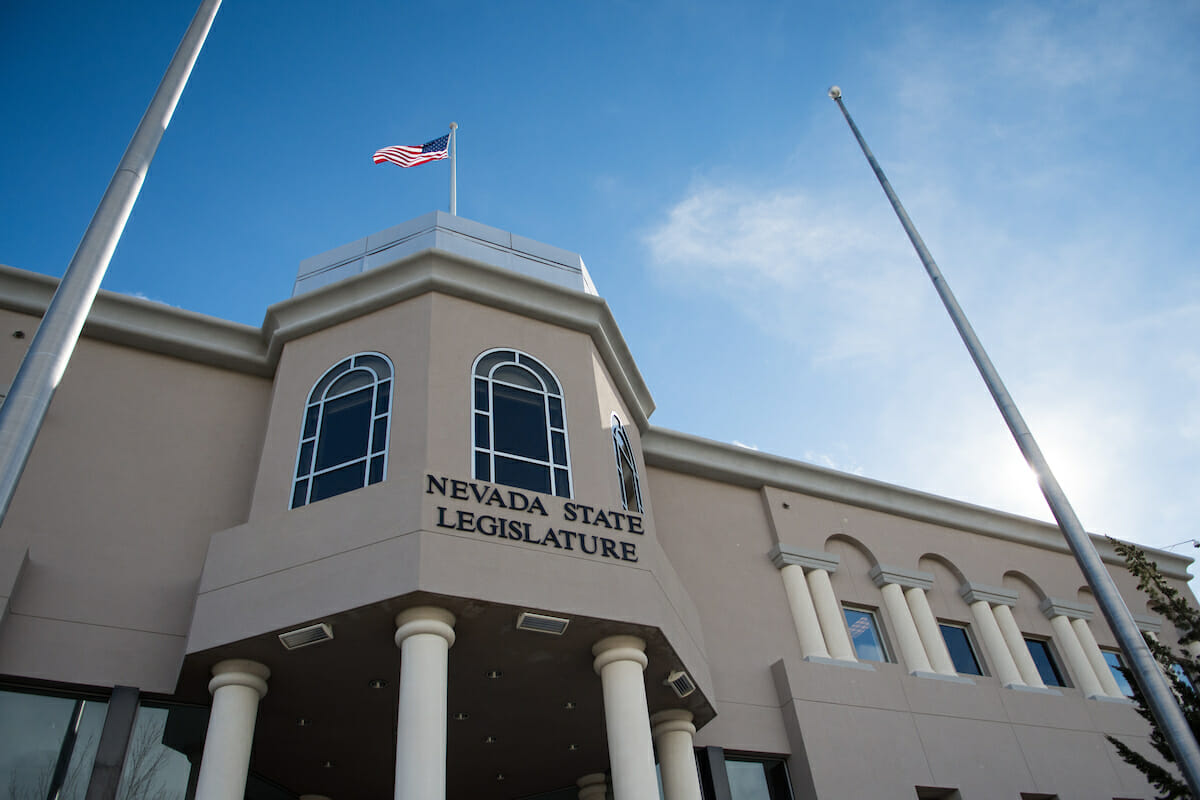Comparing legislative sessions in Nevada and Texas

by Seth Rau
Nevada and Texas are the only two states with more than three electoral votes that hold state legislative sessions every other year. As someone who has worked sessions in each state, I thought that it would be interesting for readers of both The Nevada Independent and The Texas Tribune to compare the processes and see what each state can learn from what the other one does more effectively.
I compiled a list of 10 areas where each state excels and can learn from the other.
Nevada Advantages:
- Deadlines: Nevada’s sessions are 20 days shorter than Texas’ (120 vs. 140), but time is more effectively used in Nevada. From the first week of the session in Carson City, there are active committee hearings and bills are moving. The deadlines come faster in Nevada and committees have firm deadlines for passing bills in both chambers; in Texas, only the lower chamber does. In Texas, there are no hearings during the first 30 days except for emergency items, and regular bills cannot pass the chamber of origin in the first 60 days without supermajority consent. However, Nevada does more emergency and exempt bills to escape its deadlines, which makes sine die more hectic.
- Committee timing/selection: Nevada chooses its committee chairs and members well before the New Year, so that the interested parties can meet with the committee members and leadership well before the session starts. In Texas, it can be a full month or more into session before committees are named.
- State of the State: The Nevada governor gives the State of the State a few weeks before the start of the session so legislators are prepared with that information heading into the session. In Texas, that does not occur until a few weeks into the session.
- Budget: Legislators start to work on the budget before the session formally starts and the Assembly and Senate work together from the start, which can lead to more consensus in the process. In Texas, the House and Senate each produce their own budget and a conference committee reconciles the differences. However, Texas’ budget riders are smoother than the Nevada process.
- Bill limits: Nevada limits the number of bills that can be introduced. Most Assembly members can only introduce 10 bills (Freshmen only get 6) and senators can only introduce 20 bills (Freshmen only get 12). While leadership can introduce unlimited numbers of bills, each session averages just over 500 bills in each chamber. In Texas, only legislators can introduce bills, but the numbers are unlimited; some senators will author 100 bills in a session.
- Virtual testimony: Nevada allows testimony from outside of Carson City. Since it is a large state (not as big as Texas, but three-fourth of the population is a seven-hour drive from the Capitol), there is typically video testimony available from Las Vegas and sometimes Elko or other locations. In Texas, having video testimony available in multiple parts of the state would increase participation in the legislative process but it might make hearings go on forever.
- Amendment markup: Nevada marks up amendments to bills in different colors, so it is easier to follow through which draft has specific amendments. Texas has no similar process except side by side markups, which are not as useful.
- Capitol work space: The Nevada legislative building has far more work spaces in it for the general public than the Texas Capitol. They even have a lobbyist room on the ground floor with plenty of electrical outlets.
- Access to legislators: Nevada legislators are far more accessible. Outside of legislative leaders, it is not difficult to meet most members of the Nevada Legislature with a little planning. In Texas, you will meet with staff much of the time, who may or may not deliver your message to their bosses.
- Other entity bill introduction/state agency positions: Nevada allows entities other than legislators to introduce bills. For example, committees can introduce bills along with all of the executive offices, Supreme Court, state agencies, counties, school districts, cities and even the Youth Legislature. The governor and state agencies can testify for and against bills; in Texas, agencies must remain neutral and testify only as a resource witnesses.
Texas Advantages:
- Staff: Texas legislators actually have staff members beyond secretaries/attaches. Most House members have at least three aides; senators commonly have a dozen. Staffers, especially in Senate Finance and House Appropriations, sit behind their bosses in committee hearings, which helps keep legislators informed. In Nevada, legislators only have one attache unless they use campaign funds to pay for more people.
- Floor debates: Debates in the Texas Legislature are much livelier than those in Nevada. A long floor debate on a bill is rare in Nevada, but incredibly common in Texas, in both the House and Senate. Texas also has far more floor amendments than Nevada does, which allows for all members, especially those who are not on the committee that heard a bill, to have a greater say in the process. Additionally, Texas allows for local calendars, easing many uncontested bills to expedited approval. Knowing the rules is far more important in Austin than Carson City.
- Subject matter experts: Due to the larger size of the Legislature in Texas (150 vs. 42 members in House/Assembly and 31 vs. 21 in the Senates), it is more common to see legislators with subject matter expertise leading committees. That being said, there are uninformed members on every committee from both parties in each state.
- Minutes and document posting: Texas publishes the minutes of committee hearings and floor actions relatively quickly. It can take months after a session in Nevada to publish the minutes of hearings or floor sessions. Texas also gets out amendments, especially in the House, much faster. However, Nevada does report roll-call votes instantly, unlike Texas.
- Minority party chairs: Texas allows the minority party to hold committee chairmanships. While it is not illegal in Nevada, whichever party is in control (and that changes frequently, unlike today in Texas) typically holds all of the committee chairs. Choosing a chair from another party in Nevada would mark a major change.
- Witness registration: Texas has a better process for registering witnesses at hearings, using the computer systems in the House and much of the Senate. Nevada is still using a pen-and-paper registry, which sometimes results in big lines of people waiting to sign up.
- Allowing witnesses to testify: Texas almost always allows every witness to testify on legislation, where Nevada legislators frequently set limits on how long they will hear a given bill. This process, while grueling, is more democratic than Nevada where it is possible for legislators and/or lobbyists to rig the proceedings and deny some witnesses a hearing.
- Interim work: Legislative staff works during the interim in Texas, but not in Nevada. The Nevada legislative world has hearings during the interim (as does Texas), but legislators have no support unless their campaigns pay for it.
- No term limits: Without term limits, Texas is able to have legislators with extensive institutional knowledge. Even without term limits, only 8 of the 31 Senators have served more than 12 years and only 34 of the 150 House members have served past the Nevada limit of 12 years in office.
- Austin/Capitol: Needless to say, Austin is a far more cosmopolitan city than Carson City. While Adele’s and Villa Basque are outstanding restaurants, Austin has hundreds of outstanding restaurants. That also means it is far easier for legislators to escape the political scene in Austin than in a small town like Carson City. Finally, the Texas Capitol is by far the more impressive building than Nevada’s, with a distinct style that is fitting of the state.
Overall, while some residents of both Nevada and Texas complain that they do not have full time Legislatures, both states are remarkably efficient at concluding most of the key work in a few months at the start of an odd year of each biennium. Both states have special sessions, but manage to accomplish the vast majority of their work in the regular legislative sprint. Both states should take lessons from one another to improve their processes to continue to produce better policy for the citizens of their respective states.
